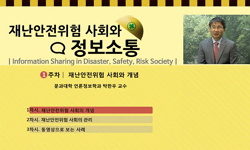Risks for minimizing capital costs are divided into systematic risks and unsystematic risks. Systematic risk is a market risk that cannot be diversified from a macroeconomic perspective, and unsystematic risk is defined as a diversifiable risk arising...
http://chineseinput.net/에서 pinyin(병음)방식으로 중국어를 변환할 수 있습니다.
변환된 중국어를 복사하여 사용하시면 됩니다.
- 中文 을 입력하시려면 zhongwen을 입력하시고 space를누르시면됩니다.
- 北京 을 입력하시려면 beijing을 입력하시고 space를 누르시면 됩니다.
https://www.riss.kr/link?id=A109016497
- 저자
- 발행기관
- 학술지명
- 권호사항
-
발행연도
2024
-
작성언어
English
-
주제어
시장모형 ; 기업가치 ; 위험 ; 회계정보 ; 현금흐름 ; ROA ; Market model ; Firm value ; Risk ; Accounting information ; Cash flow ; ROA
-
등재정보
KCI등재
-
자료형태
학술저널
-
수록면
43-62(20쪽)
- 제공처
-
0
상세조회 -
0
다운로드
부가정보
다국어 초록 (Multilingual Abstract)
Based on the market model that determines the rate of return, this study divides accounting information into systematic risk and unsystematic risk from an accounting information perspective. Systematic risk is a risk that depends on market conditions , which is a company's market activity, there sales were derived as a proxy. In addition, since a unsystematic risk is inherent in the company, its management is derived by investment activities necessary for asset operation and profit generation, and that cash flow creation is necessary for the company to operate as a sustainable going concern. Considering this, Return On Assets(ROA) and net profit were set as a proxy for measuring unsystematic risk.
As a result of the study, sales in a proxy for systematic risk, which are accounting information in financial statements, Return On Assets(ROA) and net profit, which are a proxy for unsystematic risk, have a positive(+) correlation with firm value, and it was verified to have significance within 1%.
Risks for minimizing capital costs are divided into systematic risks and unsystematic risks. Systematic risk is a market risk that cannot be diversified from a macroeconomic perspective, and unsystematic risk is defined as a diversifiable risk arising from a company's management risk. W. Sharpe's market model was studied to have a logical structure in which firm value is determined by dividing a company's rate of return into market risk and management risk.
Based on the market model that determines the rate of return, this study divides accounting information into systematic risk and unsystematic risk from an accounting information perspective. Systematic risk is a risk that depends on market conditions , which is a company's market activity, there sales were derived as a proxy. In addition, since a unsystematic risk is inherent in the company, its management is derived by investment activities necessary for asset operation and profit generation, and that cash flow creation is necessary for the company to operate as a sustainable going concern. Considering this, Return On Assets(ROA) and net profit were set as a proxy for measuring unsystematic risk.
As a result of the study, sales in a proxy for systematic risk, which are accounting information in financial statements, Return On Assets(ROA) and net profit, which are a proxy for unsystematic risk, have a positive(+) correlation with firm value, and it was verified to have significance within 1%.
동일학술지(권/호) 다른 논문
-
운동발달 평가도구 고찰 기반 현장중심형 유아 및 아동 운동 발달 평가 방법 제안
- 충북대학교 국가미래기술경영연구소
- 조용인
- 2024
- KCI등재
-
기업혁신지표의 시계열 비교 가능성 검토 - 오슬로매뉴얼 개정 전후 변동을 중심으로 -
- 충북대학교 국가미래기술경영연구소
- 손수아
- 2024
- KCI등재
-
엘리트 선수를 위한 비대면 온라인 훈련관리 시스템 개발
- 충북대학교 국가미래기술경영연구소
- 김광준
- 2024
- KCI등재
-
바이오헬스 기업의 비즈니스모델 유형과 성과에 관한 연구
- 충북대학교 국가미래기술경영연구소
- 고경호
- 2024
- KCI등재





 KCI
KCI






